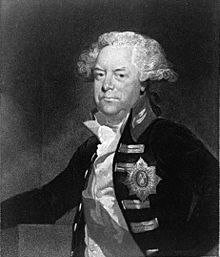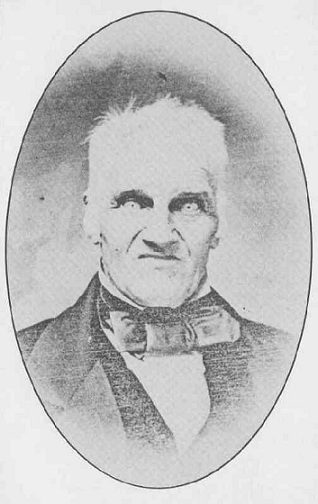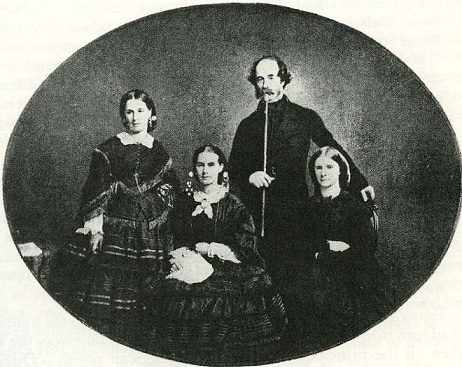You might know “Streets is Talkin'” as a song by rapper Saigon, but it also references the fact that every street name has a story behind it.
If you’ve ever wondered how “Yonge Street” got its name, read on, my friend…

Have you ever run into a tourist that asks you how to get to “Yong” street?
They pronounce it “yong,” because there is no “u” in the word, like “young.”
We take it for granted, of course. We’ve been living here all our lives, and we think the mispronunciation of the word is normal.
Or what about “Spadeeena?”
How come we put a “g” into “Eglinton,” and pronounce it “Egglington?”
Believe it or not, many of these streets are named after actual people, some of importance, some not.
You’d have to believe that Yonge Street, the most famous street in all of Canada, is named after a person. You’d have to believe that this person, man or woman, must be of extreme significance as far as Canadian history goes!
Well, believe it, folks!
Ladies and gentlemen, meet, Sir George Yonge:

A strapping young lad, wouldn’t you say? Devilishly handsome, and gentle enough to handle a new-born baby!
George Yonge was a British Secretary at War, if you couldn’t guess he was somehow involved in combat, from his fancy gettup in that photo.
He looks a tad like George Washington, although it seems like all old, dead, men from the 1700’s had grey side-mullets and a nasty scowl…
Born in Colyton, England in 1731, I honestly don’t know if Sir George Yonge ever set foot on Canadian soil. I’ve been researching this for days, and it looks as if all of his appointments and positions were held in England.
Nevertheless, the Lieutenant Governor of Upper Canada, John Graves Simcoe, named “Yonge Street” after his good pal, Sir George Yonge, in 1793.
The original Yonge Street was constructed from Eglinton Avenue, and ran north to Lake Simcoe.
What about Bloor Street?
Surely there is a man or woman behind the second-most-famous street in Toronto, no?
Once again folks, allow me to introduce you to, Joseph Bloore:

His Honourable Joseph Bloore was a reclusive poet who lived in the mid 1700’s in a small Dodge Caravan down by the river.
Bloore collected cookies that were shaped like planets, and primarily spent his time making snow-angels, and searching for four-leaf clovers.
In 1781, after a small squirrel knocked on his door and asked him to subscribe to the Toronto Star, Bloore went on a rampage and dialed the phone number of every single Torontonian (that was about eight people at the time) and asked them, “Is your refridgerator running? Really? Well you’d better go out and chase after it!”
It was at that time that Bloore was committed to a mental hospital, and the above photo was taken….
…..yeah.
Alright, well, none of that is true, but it may as well be.
LOOK at that photo!
Have you ever seen such a crazy person in your life? This guy looks absolutely insane!
And what’s with that thick bow-tie?
Seriously, if you saw a man like that on the street, and he gave you THAT look, you’d probably run away as fast as you could.
Joseph Bloore, in actual fact, was an inkeeper from Shaffordshire, England, who came to Canada in 1819.
He had a hotel on King Street, and eventually opened a brewery in an area that he founded as “The Village of Yorkville.” Oh, if only he knew that it would one day become the most expensive area in the city of Toronto…
Bloor Street itself was actually known as “Concession Two” (Concession One was Queen Street) up until 1855 when it was renamed after him, although for some reason, the “e” was left off. Perhaps it was an honest mistake, or perhaps half the country couldn’t read or write back then…
Lastly, let’s take a look at Jarvis Street in Toronto, and how that street was named.
When you think of the most famous family in the history of Toronto, I certainly hope you don’t think of some Canadian version of the Trumps, Hiltons, or whatever other stupid reality-tv-driven families are making headlines just because Twitter and YouTube make every single person’s broken-heel of note.
I think that the Jarvis family is the most famous, and one of the most important, families in the history of our city and perhaps Canada as well.
Here is William Botsford Jarvis and his family:

I’m not sure why Mr. Jarivs is holding a pool cue, or a giant stick, but I can only assume that he knows what he is doing.
I also have to remark that in 2012, it would be absolutely, positively, impossible to get your two teenage daughters to sit that still for a photo, without texting their friends “omg u wld nt blv wht im doing. c u 2nite.” Oh, if only the world today was what it was 200 years ago when it took two hours to get dressed in six layers of clothing for no apparent reason…
Born in 1799 (also known as the last year the Leafs won the Stanley Cup), Jarvis’ namesake gave us not only Jarvis Street, but also the area of Rosedale. His residence was named “Rosedale House,” and the area eventually took on that name.
But Jarvis’ most important contribution to Toronto (back then it was York, Upper Canada) was as the sheriff of the “Home District,” which comprised much of what we know as Ontario & Quebec today. He held the job from 1827 to 1856, and battled the infamous William Lyon Mackenzie (who we all learned about in grade eight history – thanks Mrs. Withers!) in the Upper Canada Rebellion of 1837. Man, it’s like a flashback to 1992 in my brain! What’s next – are we going to learn about the Family Compact?
I must say here that in my research I’ve seen conflicting reports; some say that Jarvis Street was named for William Botsford Jarvis, who is likely the most influential of the Jarvis clan, and some say it was named for his cousin, Samuel:

Hey, anybody that kills somebody in a good old-fashioned duel deserves to have a street named after them!





























Joe Q.
at 9:19 am
The old house next to Casa Loma, Spadina House, is pronounced “Spadeena” — and apparently that was the original pronunciation of the street too.
Scott
at 3:30 pm
More trivia, “Spadina” derives from the Ojibwa word “Ishpadina”, meaning hill.
Chuck
at 9:23 pm
Bloore’s giving the Gas Face!
http://www.youtube.com/watch?v=QYp28tEAVvs